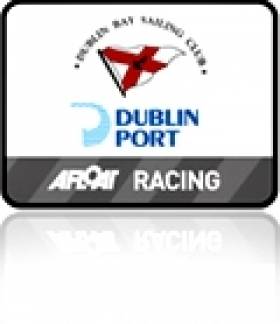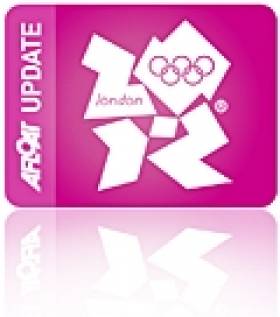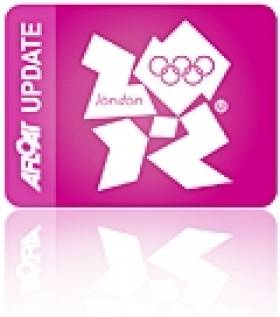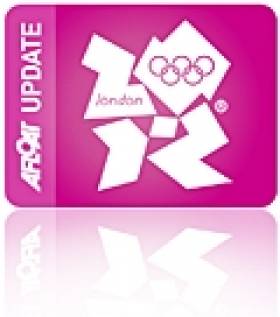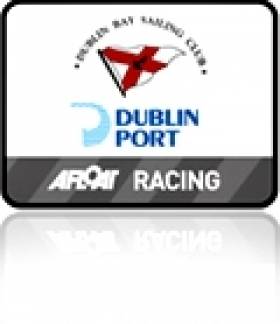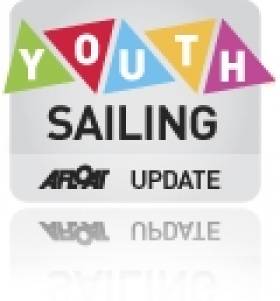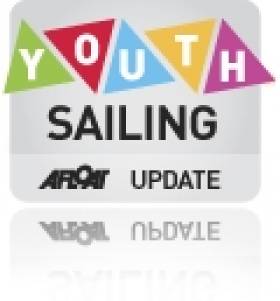Displaying items by tag: Laser
France Gets SB3 Worlds in 2013
COYCH was founded in 1982 and is affiliated to the French Sailing Federation. COYCH boasts a highly qualified technical staff and secretariat, with a high level of experience in running world class events. Further news and developments about COYCH can be followed on their website: www.coych.org
In recent years, the Laser SB3 Class has received numerous requests from Yacht Clubs in sailing hot spots around the World to host the classes World Championships. Bid documents are completed by interested Clubs and submitted to the Laser SB3 World Council for review and debate. It's never an easy task for the World Council members choosing from such high calibre invitations, but the acid test for decision making is whether the venue will deliver a high number of entries for a Championship as was the case for the last two Championships: 107 boats at Lake Garda in 2010 and 103 boats at Torquay UK. "With the proximity of strong Italian fleet, with 35 Laser SB3 and the Portugese fleet with 30 Laser SB3, as well as the attraction of the Côte d'Azur in late summer, Hyeres was the best choice for the Laser SB3 class," explained Russo.
Ahead of the 2013 World Championships in Hyeres, the Laser SB3 Fleet will compete at a European Championships in Medemblik, Netherlands, 1-7 September 2012 followed by the World Championships at Hamilton Island, Australia, 13-20 December 2012.
With 40 hulls currently in production, the Laser SB3 continues to grow strongly around the world.
Craig Takes Another Laser Win on Dublin Bay
Although it was an evening that brought out the paddleboarders on to Scotsman's Bay it was equally a nice night for a Dublin Bay Sailing Club (DBSC) dinghy race with an ebbing tide, flat sea and six knot westerly breeze.
Sean Craig - just back from the SB3s Southerns in Fenit at the weekend - resumed his place at the top of the PY/Laser fleet with Chris Arrowsmith second and third Dave Cahill.
And prior to packing up for next week's Fireball World Championships in Sligo, Noel Butler and Stephen Oram were winners again in a seven boat Fireball fleet. Second was Frank Miller's Blind Squirrel from the DMYC.
DUBLIN PORT Dublin Bay Sailing Club Results for 7 JUNE 2011
FIREBALL - 1. nn (S Oram), 2. Blind Squirrel (Frank Miller), 3. Licence to Thrill (Louis Smyth)
IDRA 14 FOOT - 1. Dunmoanin (Frank Hamilton), 2. Doody (J.Fitzgerald/J.Byrne), 3. Squalls (Stephen Harrison)
MERMAID - 1. Tiller Girl (J.O'Rourke), 2. Lively Lady (G O'Neill & M Hanney), 3. Kim (D Cassidy)
PY CLASS - 1. Sean Craig (Laser), 2. C Arrowsmith (Laser), 3. D Cahill (Laser)
Craig Outwits Lyttle for DBSC Dinghy Honours
In a fine turnout for the Laser class, the Royal St. George's Sean Craig outwitted club mate Theo Lyttle for line honours tonight in the Laser dinghy class on Dublin Bay.
Tonight was the last race in the first series of the Dublin Bay Sailing Club season.
The 13-boat Laser fleet – that race as part of the PY class – was double that of any other fleet tonight as 10–12 knot westerlies provided perfect dinghy sailing for the 30 dinghies competing. DBSC set triangular courses for all five classes.
It was ideal world championship practise for the six Fireballs now only ten days away from the world championships in Sligo. Continuing a theme Noel Butler and Steven Oram were winners again on Dublin Bay. Second was Winder (E.Butler/O.Laverty) and third Blind Squirrel (Frank Miller) of the DMYC.
In the PY race, Lyttle closed on Craig at the top of the second beat but downwind Craig extended again to take a comfortable margin by the line. Third was Paul Keane.
There is more good news for the Olympic single-hander in Dublin with reports that numbers for club racing are likely to increase as the DBSC Summer season progresses.
So far 21 Lasers are entered in total in a PY fleet of 28 boats.
The sailors involved in the rebirth of the Laser as a club boat include former Laser national class champion Chris Arrowsmith and tonight's race winner, the SB3 and Flying fifteen ace, Sean Craig. Former 420 champ Theo Lyttle is a regular as well as Gary O'Hare.
Full DUBLIN PORT Dublin Bay Sailing Club Results for 31 MAY 2011 results are below:
BENETEAU 31.7 - 1. Extreme Reality (P.McSwiney/E.O'Rafferty), 2. Attitude (D.Owens/T.Milner)
BENETEAU 31.7 - 1. Extreme Reality (P.McSwiney/E.O'Rafferty), 2. Attitude (D.Owens/T.Milner)
CRUISERS 2 - 1. Cor Baby (Keith Kiernan et al), 2. Free Spirit (John O'Reilly), 3. Graduate (D O'Keeffe)
CRUISERS 3 - 1. Chouskikou (R.Sheehan/R.Hickey), 2. Grasshopper 2 (K & J Glynn), 3. Pamafe (Michael Costello)
CRUISERS 4 - 1. Maranda (Myles Kelly)
FIREBALL - 1. nn (S Oram), 2. Winder (E.Butler/O.Laverty), 3. Blind Squirrel (Frank Miller)
GLEN - 1. Glendun (B.Denham et al), 2. Glenshesk (L.Faulkner et al), 3. Glencorel (B.Waldock/K.Malcolm)
IDRA 14 FOOT - 1. Dunmoanin (Frank Hamilton), 2. Doody (J.Fitzgerald/J.Byrne), 3. Squalls (Stephen Harrison)
MERMAID - 1. Tiller Girl (J.O'Rourke), 2. Lively Lady (G O'Neill & M Hanney), 3. Kim (D Cassidy)
PY CLASS - 1. Sean Craig (Laser), 2. T Lyttle (Laser), 3. P Keane (Laser 1)
RUFFIAN 23 - 1. Alias (D.Meeke/M.McCarthy), 2. Golden Girl (Michael Carrigan et al), 3. Diane ll (Bruce Carswell)
SQUIB - 1. Tais (Michael O'Connell), 2. Sidewinder (D.Croke/R.Bowen)
Medal Race Gives Annalise Another Win But No Medal
Annalise Murphy notched up another victory in this morning's final medal race but there was still no medal for the Dun Laoghaire solo sailor at the fifith round of the ISAF World Cup in Holland.
Murphy rounded off her Delta Lloyd regatta performance as she started it, with a win, bringing to five her tally of first places taken in the Laser Radial fleet at the masive Dutch regatta. In spite of today's special win there was never any hope of a medal due to a double false start on Friday, a costly race infringement that clearly cost the 21-year old this round of ISAF's World Cup series. She finished the regatta ninth overall having won the final three races in near gale force conditions.
Strong Winds Give Annalise the Lead in Holland
It was a frustrating third day for the sailors at the Delta Lloyd Regatta in Medemblik, Holland but not for Dun Laoghaire's Annalise Murphy who proved her world class speed again in strong winds. With wind increasing to 30 knots, racing was abandoned and boats sent to shore after just four races were completed.
Ireland's Annalise Murphy won the only Laser Radial race today. "I like the breeze!" said Annalise "but I have to admit that the last downwind leg was scary!"
The National Yacht Club sailor is now leading the strong Laser Radial fleet, "I am not complaining, I had a good result. I was leading by a long distance at the top mark but Marit Bouwmeester caught up on the down wind but I could stay in front." She now leads the overall standings on 14 points, ahead of Tina Mihelic (CRO), who came fifth today, on 15 points after discarding her first day's disqualification "I am satisfied with my result. I am not so strong in the breeze, I am much lighter than the others and it is harder for me to hike when the wind is strong. A fifth is a good result and I am relieved that I can finally discard my penalty."

Annalise at high speed today. Photo: Sander van der Borch
Marit Bouwmeester (NED) have enjoyed better results in the breeze with a second, and comes back to the score, she places in third overall position.
Overnight leader Gintare Scheidt finished 13th today and has dropped to fourth overall.
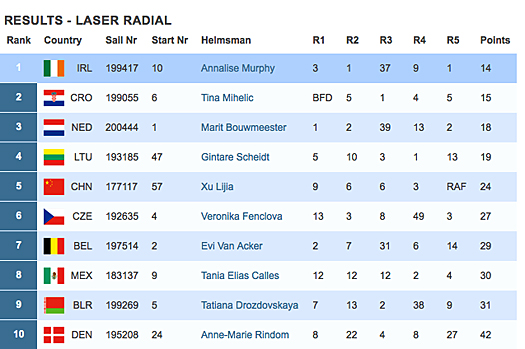
On top of the World in Holland. The Scoreboard after five races
In the Men's RS:X were the only fleet to successfully complete their two scheduled races. The day belonged to Taehoon Lee (KOR) who won Race 5 before finishing second in Race 6 to end the day on 12 points is in third.
The top of the Men's Standings is tight with just three points are separating Dorian Van Rijsselberge (NED) in first, on nine points, and Lee in third.
Van Rijsselberge, who is sailing in his home regatta, has been the pick of the sailors in the RS:X fleet this week. After winning gold at the Rolex Miami OCR and Trofeo S.A.R. Princess Sofia MAPFRE the Dutchman is well on track to maintain his 100% record so far having only competed in two out of four ISAF Sailing World Cup regattas before Medemblik.
His nine points gives him a two point advantage over Jon-Paul Tobin (NZL) who finished 2-3 today.
The rest of the fleet have a tough task of catching Van Rijsselberge, Tobin and Lee as Canada's Zachary Plavsic, in fourth place, finds himself trailing the frontrunners by 15 points.
In the Laser, ISAF Rolex World Sailor of the Year, Tom Slingsby (AUS) has jumped to the top of the Standings. He won the only race today in the Laser fleet and has six points after discarding his tenth place finish in the third race. "I am very happy, these are my optimum conditions. It is unfortunate that the second race is cancelled because I love the breeze. I hope I can win this regatta as it will then count towards my Olympic selection. If I can't win here I will try in Weymouth and then Kiel." explained Tom Slingsby.
Bruno Fontes (BRA) came second today and has ten points, he leapfrogs early Laser leader Milan Vujasinovic (CRO). The Croatian finished the first day with double bullets in the breeze but was unable to find some similar form on an equally breezy third day. His seventh place finish has seen him slip to third overall on 13 points.
In The Women's Match Racing, just six races took place in Group B before abandonment. Renee Groeneveld (NED) qualified for the Gold Group after defeating Julia Bossard (FRA). Groeneveld has won seven out of eight races and has one more to go.
With one race apiece remaining, Ekaterina Skudina (RUS), Silja Lehtinen (FIN), Anna Kjelberg (SWE) and Stephanie Hazard (NZL) are in contention for the final two qualification places. With six race wins China's Ru Wang has completed her nine races, if results go her way she will qualify for the Gold Group.
After a long postponement on shore, the race committee announced that further sailing was cancelled for the day. Tomorrow's forecast predicts a more "sailable" weather and racing will start at 9am for the Women Match Racing and from 10am for the other classes. The Laser and 470 Men will race in Gold and Silver fleets.
Annalise Wins Race Five at Delta Lloyd Regatta
Moderate easterly winds produced a great night's sailing on Dublin Bay tonight for the second Tuesday night race of the DBSC Summer season. In the Fireball dinghy class S. Oram's unnamed boat entry won again from Louis Smyth's 'Licence to Thrill'. Gary O'Hare lead the Laser fleet and picked up the Portsmouth Yardstick (PY) win from P. Keane. Third on PY was E. Ryan's RS400 dinghy.
DUBLIN PORT Dublin Bay Sailing Club Results for 3 MAY 2011
IDRA 14 FOOT - 1. Dunmoanin (Frank Hamilton)
MERMAID - 1. Jill (P.Smith/P.Mangan), 2. Lively Lady (G O'Neill & M Hanney)
PY CLASS - 1. Gary O'Hare (Laser), 2. P Keane (Laser 1), 3. E Ryan (RS400)
CRUISERS 2 - 1. Graduate (D O'Keeffe), 2. Cor Baby (Keith Kiernan et al)
CRUISERS 3 - 1. Papytoo (M.Walsh/F.Guilfoyle), 2. Chouskikou (R.Sheehan/R.Hickey), 3. Grasshopper 2 (K & J Glynn)
CRUISERS 4 - 1. Ghrazel (Charles Pearson), 2. Maranda (Myles Kelly)
FIREBALL - 1. nn (S Oram), 2. Licence to Thrill (Louis Smyth), 3. Elevation (N.Colin/M.Casey)
GLEN - 1. Glendun (B.Denham et al), 2. Glenshesk (L.Faulkner et al), 3. Glenshane (P Hogan)
RUFFIAN 23 - 1. Icicle (C & J Murray), 2. Diane ll (Bruce Carswell), 3. Alias (D.Meeke/M.McCarthy)
Moth Dinghy Makes its Dublin Bay Sailing Club Debut
Making its debut for the first time under the club burgee was an International Moth dinghy. The ultra fast hull was airborne at just eight knots of breeze, making even the trapezing Fireballs look slow. But despite the pace the new fangled dinghy did not feature in the overall Portsmouth Yardstick (PY) results. See below.
A healthy turnout of six 'balls, urged on by the fact that the class World Championships is in Sligo in 46 days time, got some trapezing gusts and some planing waves downwind in a north-easterly breeze of 6-8 knots. S. Oram took the winning gun from Louis Smyth sailing Licence to Thrill.
Single handed Lasers boasted twice the Fireball turnout to be the biggest class racing in Scotsman's bay tonight. It's a show of strength from a class surely worthy of its own start if this kind of turnout can be maintained.
Sean Craig won the Laser race from Peter Craig but the overall PY result went to E. Ryan's RS400.
Two Dublin Bay Mermaids and disappointingly, a single IDRA 14, No.124, Squalls also competed.
DUBLIN PORT Dublin Bay Sailing Club Results for 26 APRIL 2011
FIREBALL - 1. nn (S Oram), 2. Licence to Thrill (Louis Smyth), 3. Incubus (C Power/M Barry)
MERMAID - 1. Lively Lady (G O'Neill & M Hanney), 2. Jill (P.Smith/P.Mangan)
PY CLASS - 1. E Ryan (RS400), 2. Sean Craig (Laser), 3. Peter Craig (Laser)
BENETEAU 31.7 - 1. Extreme Reality (P.McSwiney/E.O'Rafferty), 2. Magic (D.O'Sullivan/D.Espey)
BENETEAU 31.7 - 1. Magic (D.O'Sullivan/D.Espey), 2. Extreme Reality (P.McSwiney/E.O'Rafferty)
CRUISERS 2 - 1. Cor Baby (Keith Kiernan et al), 2. Red Rhum (J Nicholson), 3. Free Spirit (John O'Reilly)
CRUISERS 3 - 1. Grasshopper 2 (K & J Glynn), 2. Pamafe (Michael Costello), 3. Papytoo (M.Walsh/F.Guilfoyle)
CRUISERS 4 - 1. Maranda (Myles Kelly), 2. Ghrazel (Charles Pearson), 3. Artemis (J.Giles)
RUFFIAN 23 - 1. Diane ll (Bruce Carswell), 2. Icicle (C & J Murray), 3. Alias (D.Meeke/M.McCarthy)
SIGMA 33 - 1. Rupert (R.Lovegrove/P.Varian), 2. Pippa lV (G.Kinsman/K.Blake/M.O'Brien)
SQUIB - 1. Tais (Michael O'Connell), 2. Periguin (N.Coakley/J.Redahan)
More DBSC News here.
Laser Radial Gets New Home
Free Laser Dinghy to Train Non Sailing Youths
The boat (valued around €2000) has all the Laser go fast string, plus a launching trolley, a Silva compass and a Gorilla tiller. The donor in question has told afloat.ie "I don't know any organisation that might use it to introduce sailing to non–sailing youth, but if one exists, I would be delighted to give this boat to them for free". If you know of such an organisation or a worthy home for this generous offer please email the details to: [email protected], putting 'Laser Youth Boat' in the subject line. Alternatively leave a comment below.




























